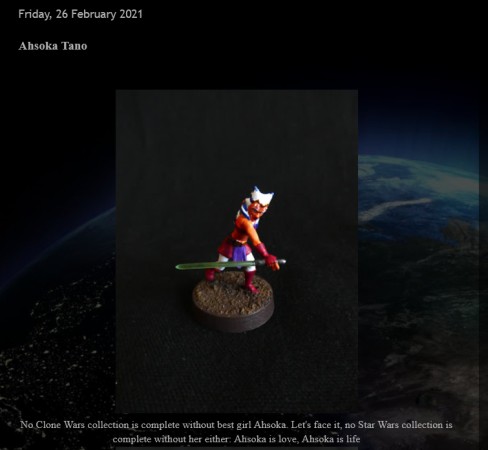A couple of months ago, I wrote a short review of some of the nice stuff Simon and Lisa at Pig Iron sent us for Iron Dream Tournament V.
One of the best things about the models, I found, was their rationality and versatility, and as I wrote the most obvious possibilities that sprang to my mind, I got to think it'd be real nice if I could paint up a few of the figures to illustrate what I meant.
So I decided I would – those trooper models paint up real easily, and then I would just have to give them a bath of acetone and put them back into the tournament prizes bag.
At first I thought I'd put the results on our website, but it occurred to me that such a quick (and in my opinion decent-looking) result might be worth asking ![]() Editor in Chief Bill
Editor in Chief Bill ![]()
![]() if detailing the painting process could be worth a Workbench article.
if detailing the painting process could be worth a Workbench article.
So don't take what follows as the majority of Workbench painting articles here: no expert advice by a pro-painter to be found. Just a few tips which, I hope, will be useful to those of you who have a growing pile of lead and sigh at the thought of their next 28mm army needing painting. Those figs aren't my best paintjobs, but none of them took longer than 5 minutes to paint.
The Black Undercoat
I always use spray black primer first. It generally is much more solid than black paint you'd apply with your brush.
Sorry if I'm stating the obvious, but you do need to finish it with another coat of black paint, all over the model. This is extremely boring, but you must apply that second coat with a brush. You don't have to do that when you prime your model white – but when you use black, it's generally because you want your undercoat to show in the recesses (so you don't have to black-line for extra contrast), if not on entire areas.
Choose Your Colours Carefully
I'm not talking about the coolness, good taste, or tabletop efficiency of the paint scheme here (it's obvious enough), but of the paints themselves.
The idea is to lay your colours in one go – not to do several layers of the same colour to cover the black and have the nice colour you wanted. To do so, it is essential to be familiar with the colours you plan on using.
Basically, you need to keep the colour thick enough to cover the black in one go – but not too thick, otherwise you're going to plaster your model. So you need to know precisely when your paint will be too watered-down, and when it will be too thick. Some paints are inadequate for this and just won't do. For example, you can't use GW Golden Yellow, Skull White, Blood Red or Catachan Green on a black undercoat unless you either want to do many layers… or thicken your model a few millimetres.
Also, some colours work more or less well with black as far as highlighting is concerned. With some colours (like Bestial Brown, Gore Red or Liche Purple), you can paint a first, watered-down layer to do a darker shade of the main colour before applying it, just because that first coat will look OK when the black shows through. With other colours, that just doesn't work – for example, greys tend to look dirty when you do that.
Finally, you have to use colours that will look efficient with just one highlight. Once again, a few colours just won't do – or at least, you won't know/have the precise colour that will do the smooth yet efficient highlight you want.
Set Priorities
You need to determine which areas will be the "focal points" of your troops, and require more attention, and which won't.
For most figures, I think flesh areas are what must be most taken care of, and even on rank-and-file troops, I'll always see to it that they look OK – screw up its skin, and your model just can't look right.
What's good with the Pig Iron infantry is that there's no apparent skin on most of the models. ![]() To me, the focal point of those models will therefore be the visor on the helmet. It's small, very simply done, easy to access, and will look pretty cool with little effort.
To me, the focal point of those models will therefore be the visor on the helmet. It's small, very simply done, easy to access, and will look pretty cool with little effort.
Now some other areas, on the contrary, can be neglected and just have one coat.
The extreme example is shiny black areas, such as black armour, black metal, and small areas of black leather. In my opinion, those can be overlooked and left plain black without harm, as a solid coat of GW Chaos Black, for example, will give an adequately glossy look to those areas. All the guns, boots or pouches could be left black, for example. Sure, you could make them look better with some highlights – but it's extra work, and you'd better direct your efforts on other areas. We've all seen so many guns drybrushed with gunmetal that would have better been left plain black.
Finally, there's what falls inbetween and will require a base colour coat and a highlight to look ok.
Now, let's see the practical applications on the Pig Iron figs (unless otherwise stated, all codes are GW or their Vallejo Game Colour equivalents).






